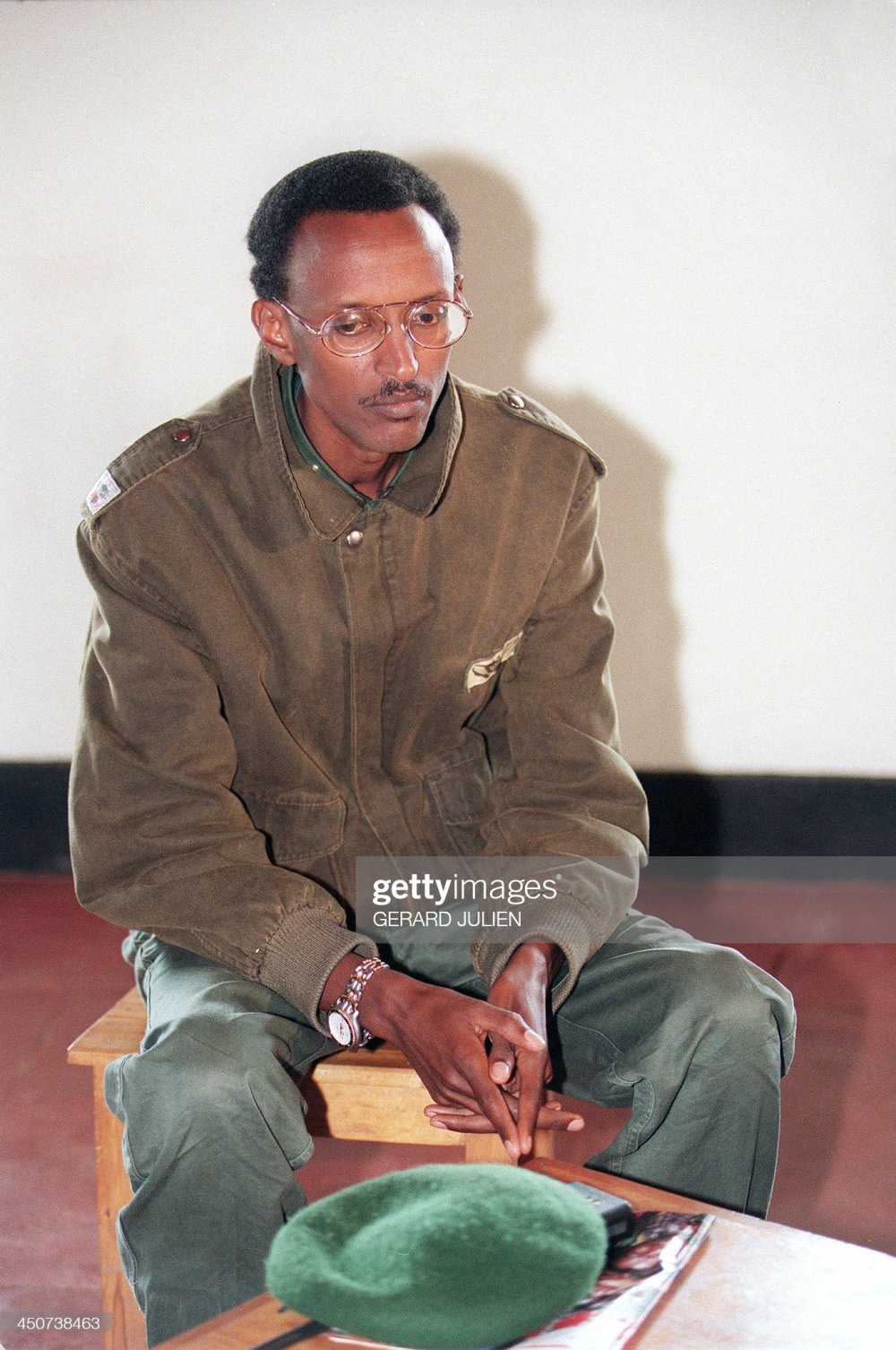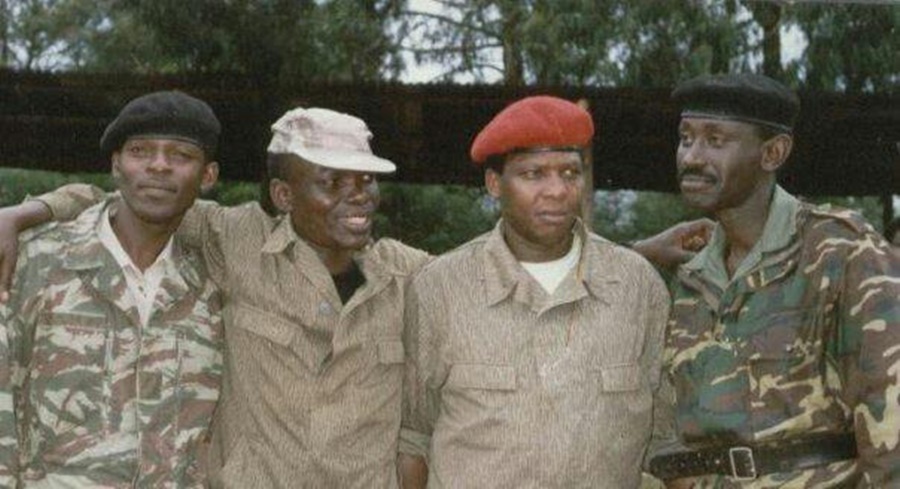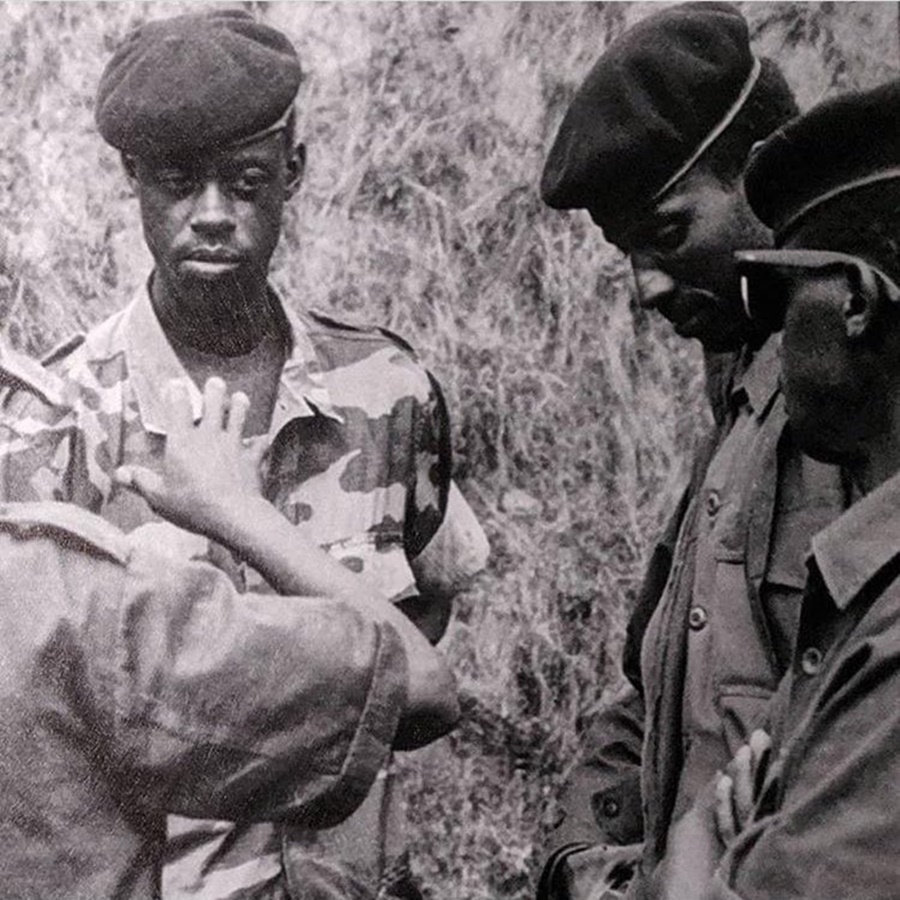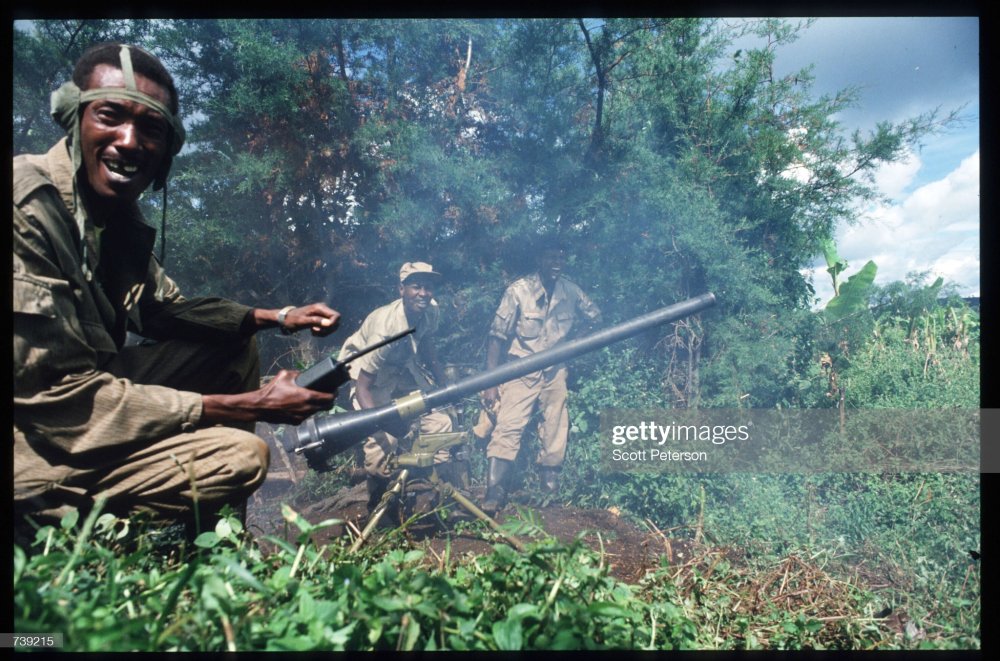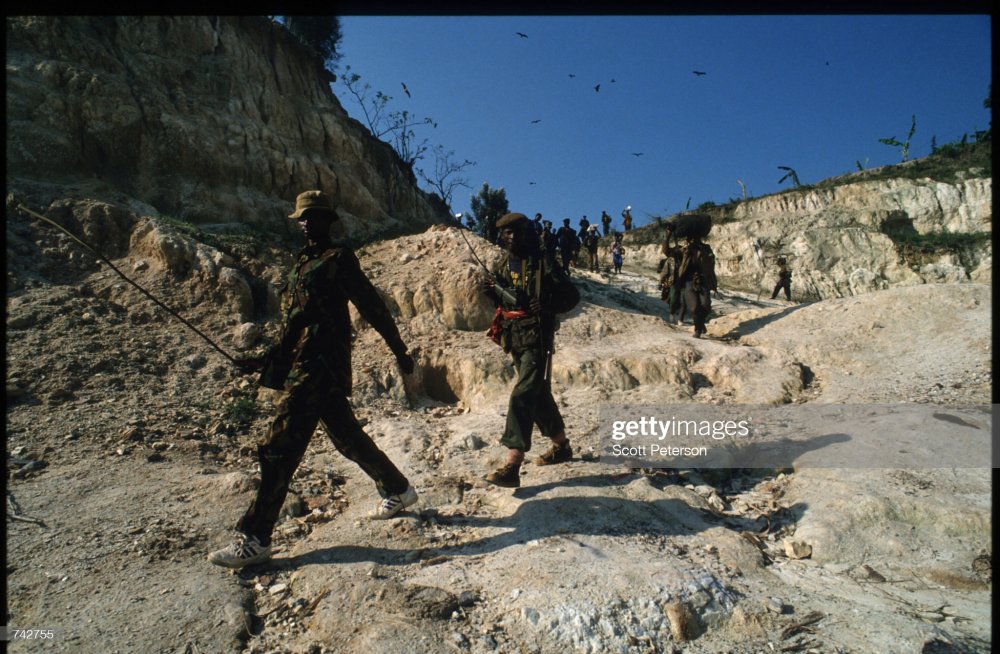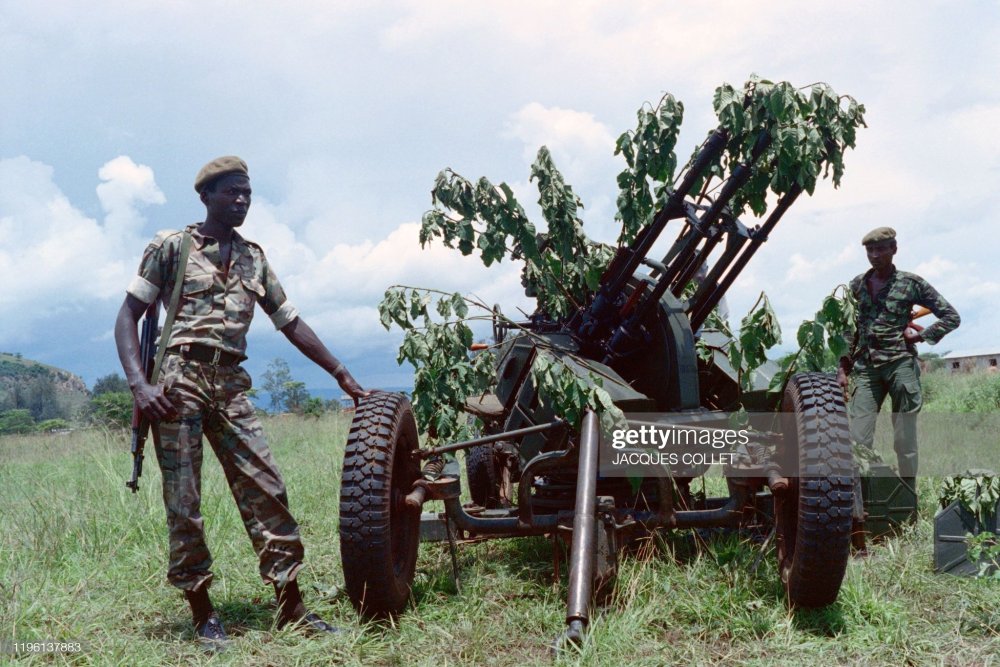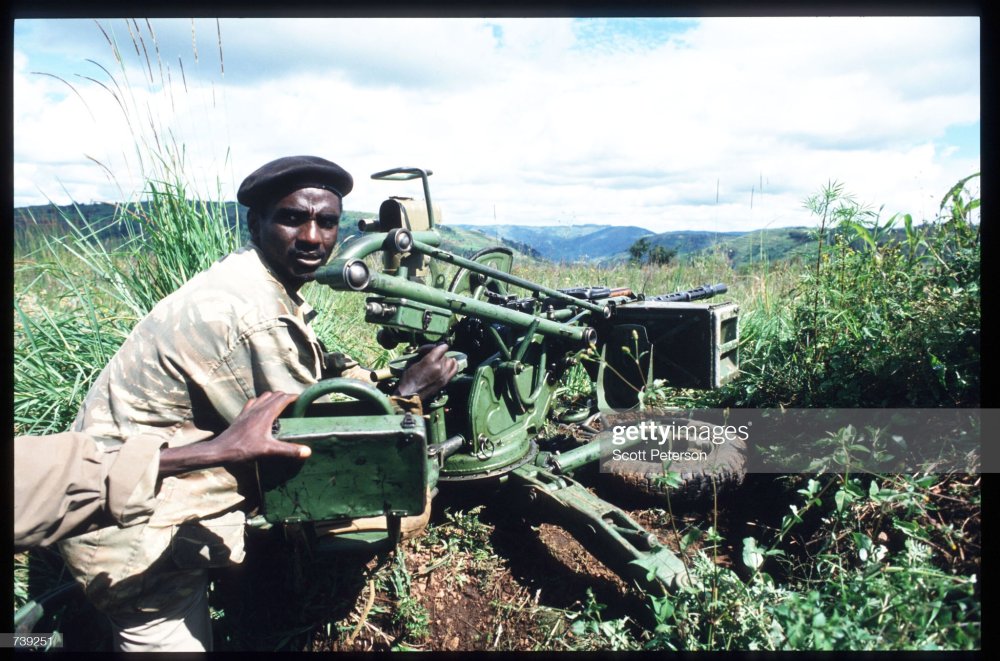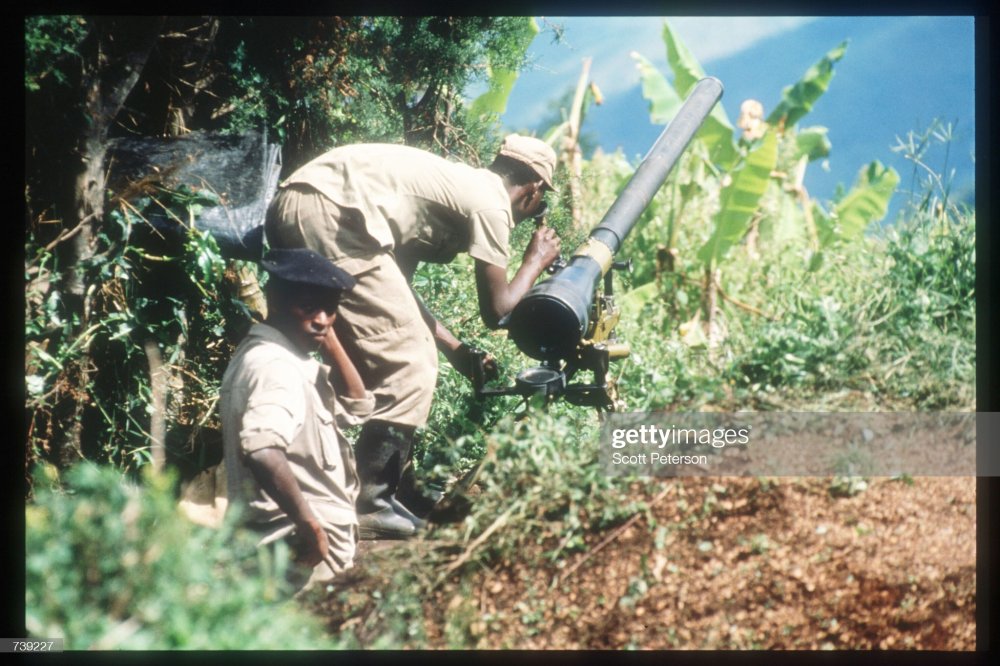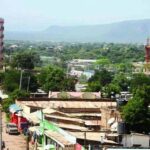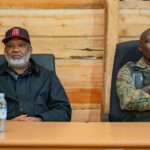“Initially, we fought in a conventional way, we fought like terrorists. Habyarimana’s troops would position themselves on the hills with anti-aircraft guns, machine guns, tanks, and planes overhead. Meanwhile, we advanced with our small rifles, holding our chests high, all the way to their heavy weapons. Many died. This was in the Mutara region, which was wide open. They’d shoot you from three or four kilometers away before you even reached them. That’s why the Zairians said the RPA were terrorists […] and in reality, it was true. Then the Head of State changed that method of warfare, shifting from conventional to guerrilla warfare, mobile tactics, hit-and-run attacks, striking the enemy where he didn’t expect, attacking where he couldn’t see us, ambushing him, shooting at night, at dawn, while he was on the move, disorienting him, keeping our location hidden.”
These are the words of Gen (Rtd) James Kabarebe explaining the combat tactics that enabled the Rwandan Patriotic Army (RPA) to win the liberation war, a victory now 31 years old.
Every battle requires specific tactics, especially in military warfare where life and death are at stake.
In 1990, when the RPA began its offensive, it had been reorganizing and training for many years. Many of those who launched the war had served in the Ugandan army in various capacities.
📰 Also Read This:
Gen. Maj. Fred Rwigyema led the RPA on the first day of the war, October 1, 1990. He was experienced, having served as the deputy commander in Uganda’s liberation war under Gen. Elly Tumwine, who was shot in the eye on the second day and taken to the UK for treatment, leaving Rwigyema in command.
But the Rwandan liberation war didn’t unfold as expected. Fred Rwigyema was shot by the enemy on October 2, just one day after the war began.
Other senior officers, including Maj. Chris Bunyenyezi (Operations Chief) and Maj. Peter Bayingana, were also killed. Bayingana was ambushed en route from Kagitumba to Gabiro, while Bunyenyezi was killed on the road from Kahi through Nyakigando to Ngarama, having left Nyagatare.
In the early days, RPA used Conventional Warfare, a traditional military tactic where opposing armies face each other directly in battle.
This method has existed for centuries. In ancient times, warriors used spears and swords to fight face-to-face, stabbing each other until one side triumphed.
As warfare evolved, people began using poison and later conventional firearms. By the 20th century, long-range artillery and guns became common, capable of destroying structures from a distance. Some of these are now seen in European ceremonial parades, mounted on carts.
Eventually, warfare became more mobile, but still largely face-to-face. In World Wars I and II, tanks and aircraft were used, but still involved opposing forces clashing head-on, each trying to push the other from its positions.
Conventional warfare is costly and risky. Soldiers are often grouped in one area, making them easy targets, leading to high casualties. It also requires expensive equipment and logistics, and because troop positions are often known, enemies can easily track and attack them.
This was the method used by the RPA in the early days, until Gen. Maj. Paul Kagame returned from military training in the U.S. and assumed leadership.
Upon arrival, he found the army demoralized. He quickly ordered troops to withdraw and regroup. He held a meeting with the senior officers, asking about the challenges in the early fighting.
Gen. (Rtd) Fred Ibingira admitted that he thought the war was lost and had planned to return to Uganda.
Most soldiers were demoralized. Some wanted to stop fighting and go back to Uganda, though it wasn’t possible since they had secretly fled Uganda and couldn’t return safely.
He said, “The commander found us in Kagitumba, and everyone was trying to find an escape route. I had come from Gulu in northern Uganda, in the 4th Division, 21st Battalion. I was marching, hoping to reach my battalion by morning. The battle had overwhelmed us.”
Kagame, then nicknamed “Afande PC,” boosted morale. He asked who was ready to continue fighting, explained that tactics had to change, and insisted that retreat was not an option. The mission was to liberate the country and stop the genocide against the Tutsi that had already begun.
At the time, the FAR (Rwandan Armed Forces) celebrated, believing they had crushed the “Inyenzi” rebels completely.
Kagame changed tactics from conventional warfare to mobile and guerrilla warfare.
The first attack under this new approach was launched to capture Gatuna in early November. The operation was led by Col. (Rtd) Twahirwa Ludovic, also known as Dodo.
Historians say this was a well-planned and executed attack that raised morale among RPA troops, many of whom had not witnessed the disastrous early days.
The same day Gatuna was captured, it was officially announced that Fred Rwigyema had died. Though many were heartbroken, the victory boosted their spirits.
Mobile and guerrilla warfare tactics made it possible to win the war. RPA forces moved from Mutara to the Virunga mountains, launching attacks and training there.
Guerrilla warfare was used to capture Ruhengeri, the country’s second most important city after Kigali and home to many top government leaders.
At the time, some detained political leaders in Ruhengeri Prison were also freed.
Guerrilla warfare involves small units striking specific targets and quickly retreating. Even just three soldiers can create chaos in an area, making it appear as if hundreds attacked.
It’s also used for ambushes, laying traps for the enemy, or destroying key enemy infrastructure like bridges. However, RPA didn’t destroy infrastructure during the liberation because they knew rebuilding would be difficult after victory.
The main goal was to confuse and destabilize the enemy, forcing them to abandon their positions and scatter.
Former FAR soldiers have testified that RPA’s tactics disoriented them, they often didn’t know where the attacks were coming from.
Mobile warfare, while similar to guerrilla warfare, is more focused on identifying enemy weaknesses and striking precisely.
In mobile warfare, troops cut off all support routes, encircling the enemy and forcing surrender.
This tactic was famously used by Germany in WWII’s Blitzkrieg (Lightning War) from 1939 to 1941 against Poland, France, and the Soviet Union, quickly seizing large territories.
During the Korean War (1950–1953), Chinese forces used similar methods, night-time surprise attacks by the Chinese People’s Volunteer Army (PVA), overwhelming enemy troops with speed and agility.
In the 1967 Six-Day War, Israeli forces used mobile warfare to defeat neighboring Arab countries.
The main goal of mobile warfare is to defeat the enemy quickly. It relies on good intelligence, unified command, and clear communication up and down the ranks.
